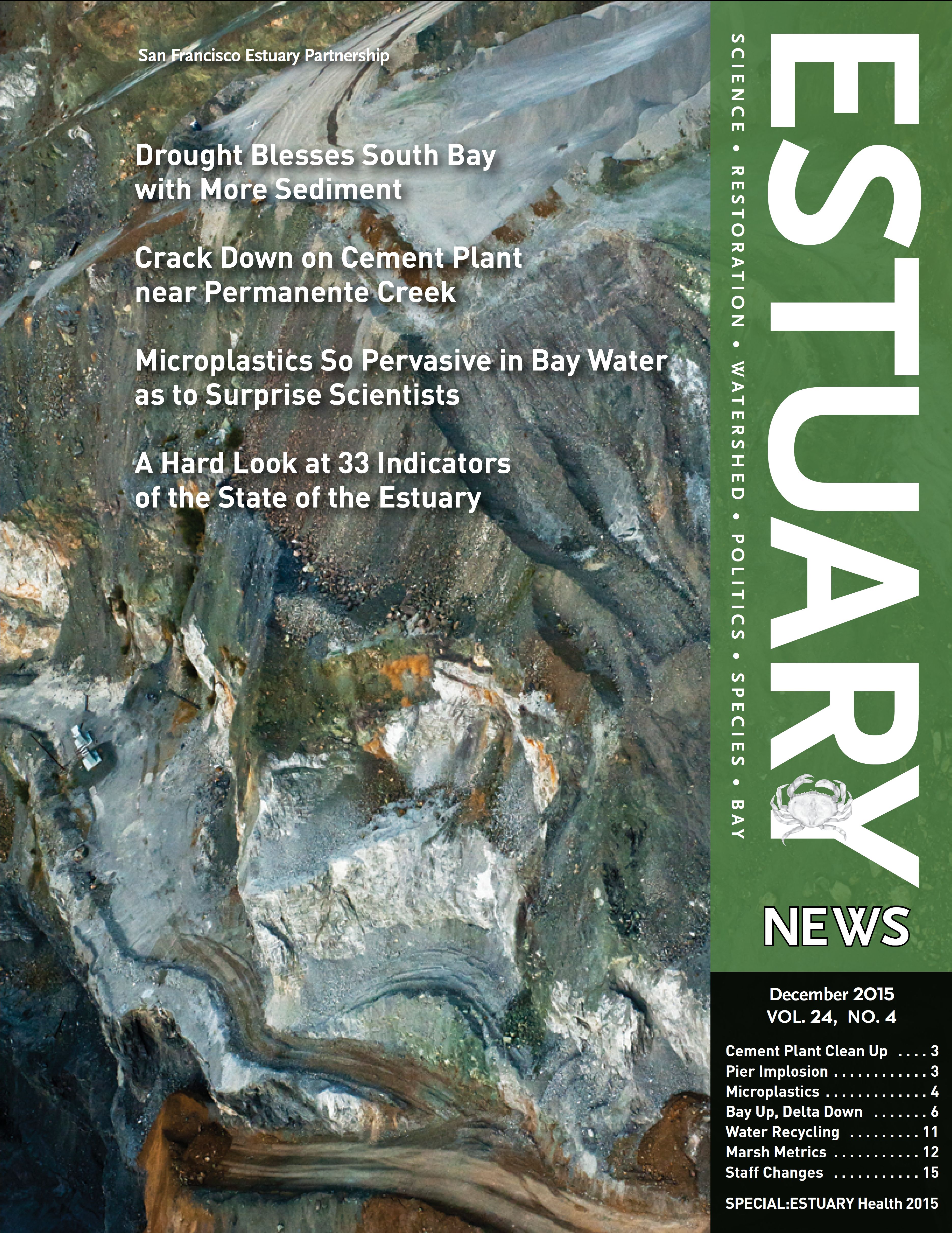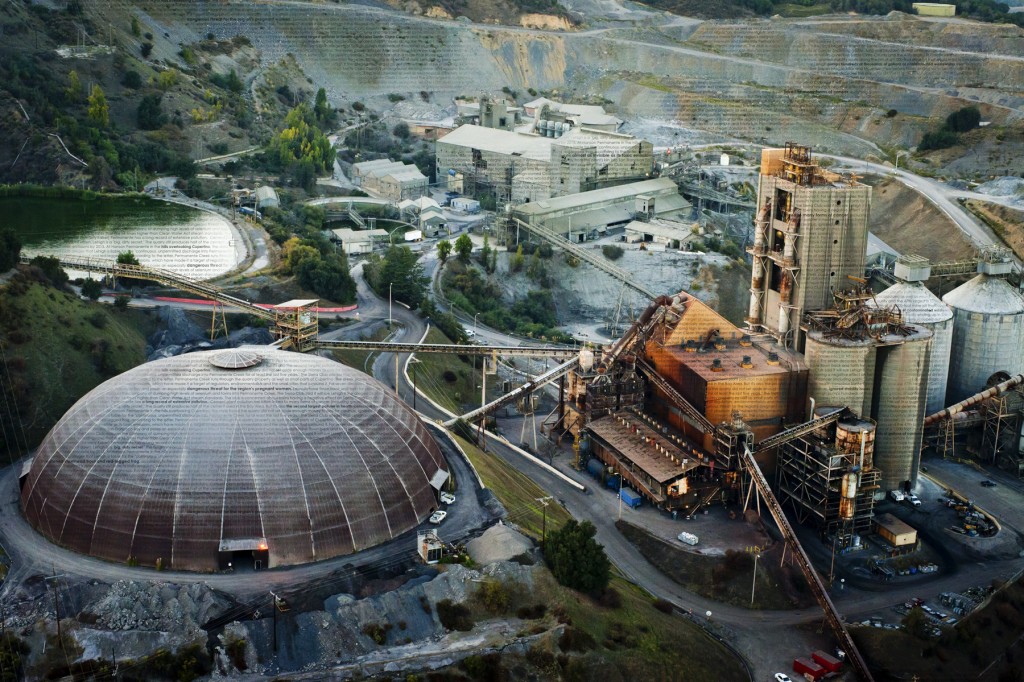
DOWNLOAD December 2015 ISSUE PDF
by Lisa Owens Viani
When miners trudged up the northeast slope of Black Mountain in the Cupertino foothills in the late 1800s and began picking away at the rock to get at limestone deposits, they probably weren’t thinking about water or air quality. And when Henry J. Kaiser took over the quarry in 1939, turning it into the largest producer of Portland cement in the U.S., the Clean Air Act and Clean Water Act were still several decades away. The Kaiser Permanente Cement Plant (named after nearby Permanente Creek) produced six million barrels of cement to build Shasta Dam, and countless roads, buildings, and bridges. Now known as Lehigh Southwest Cement Company, the quarry and plant still supplies 50% of the Bay Area’s Portland cement, and recently earned some intense scrutiny from local regulators.
The local limestone contains mercury, which can pollute both air and water, as well as selenium, which can run off into streams and soil, bioaccumulate in the food web, and cause wildlife defects.
In 2008, a neighbor called the San Francisco Bay Regional Water Quality Control Board to complain about large discharges into Permanente Creek and changes in its flow.
 “We discovered that they were discharging their quarry water into the creek in violation of their industrial stormwater permit,” says the Water Board’s Assistant Executive Officer Dyan Whyte. “I realized that it was one of the most under-regulated facilities we had in the region and that it was time to take a close look at how we regulate not only a quarry but also an enormous cement plant.”
“We discovered that they were discharging their quarry water into the creek in violation of their industrial stormwater permit,” says the Water Board’s Assistant Executive Officer Dyan Whyte. “I realized that it was one of the most under-regulated facilities we had in the region and that it was time to take a close look at how we regulate not only a quarry but also an enormous cement plant.”
In 2010 the Water Board issued a notice of violation stating that the plant needed to cease and desist its discharges into the creek. Water Board investigations also discovered that the plant was discharging water used in industrial processes, says Whyte. In 2011, after Lehigh failed to comply, the Sierra Club sued the company in federal court to stop its illegal discharges and to make them remove thousands of cubic yards of mine wastes in Permanente Creek according to their attorney, Reed Zars.
While the Sierra Club lawsuit made its way through the courts, the Water Board began requiring Lehigh to submit information about water flow pathways on the site; report buried waste; and identify all discharge locations and all products used on the site, among other things.
Finally, with a trial looming in 2013, Lehigh agreed with Sierra Club to a federal court order to construct a $5.2 million pollution treatment facility to stop its illegal discharges. It also agreed to apply to the Water Board for a comprehensive pollution permit and to restore Permanente Creek. As part of their settlement, Lehigh also agreed to post a $12 million bond to ensure that mine waste would be removed from the creek and a functioning, stable channel created that could support aquatic life.
In 2014 the Board put Lehigh under an individual NPDES permit and required it to consolidate all of its discharge points into a few for ease of monitoring. In 2015 the U.S. EPA settled a penalty action against Lehigh that resulted in a court order requiring Lehigh to pay $2.5 million in civil penalties. Whyte says Lehigh has installed a pilot treatment system that appears to be removing 93% of the selenium. Lehigh is required to have the treatment plant running at full scale by 2017. The Water Board is also requiring a groundwater investigation, and the plant is still operating under an investigative enforcement order.
Environmentalists and neighbors living near the 3,500-acre plant are not completely satisfied with the settlements and penalties. Kit Gordon, with Permanente Re-Imagined (aka the Permanente Creek Alliance) says the pollution and violations have gone on too long; she asks why enforcement actions are needed. “Why aren’t they just following the rules?” She says the quarry pit has also caused flooding in the area, releasing untreated water during heavy rains. Tired of air pollution, noise, and a layer of dust everywhere from plant emissions, neighbors want the plant gone. But it seems unlikely that will happen. County supervisors say Lehigh has a “vested right” to operate the quarry on the site.
The President of Lehigh Hanson’s western region says they are making every effort to comply with the laws: “The water treatment system at the Permanente facility is performing to our expectations to reduce waterborne selenium and other constituents. The cement plant continues to be in compliance with its water management permits. We remain committed to minimizing our environmental footprint at the Permanente facility and throughout the company.”
Gordon says a lot has changed since the quarry opened, specifically the number of people living near the quarry and scientific understanding of health impacts from mercury, selenium, and other contaminants. Says Gordon, “Mining at this site releases toxins into the air and water. Would a new facility like this be permitted to operate today? Probably not.”
NEXT STORY: No Drought of Dirt